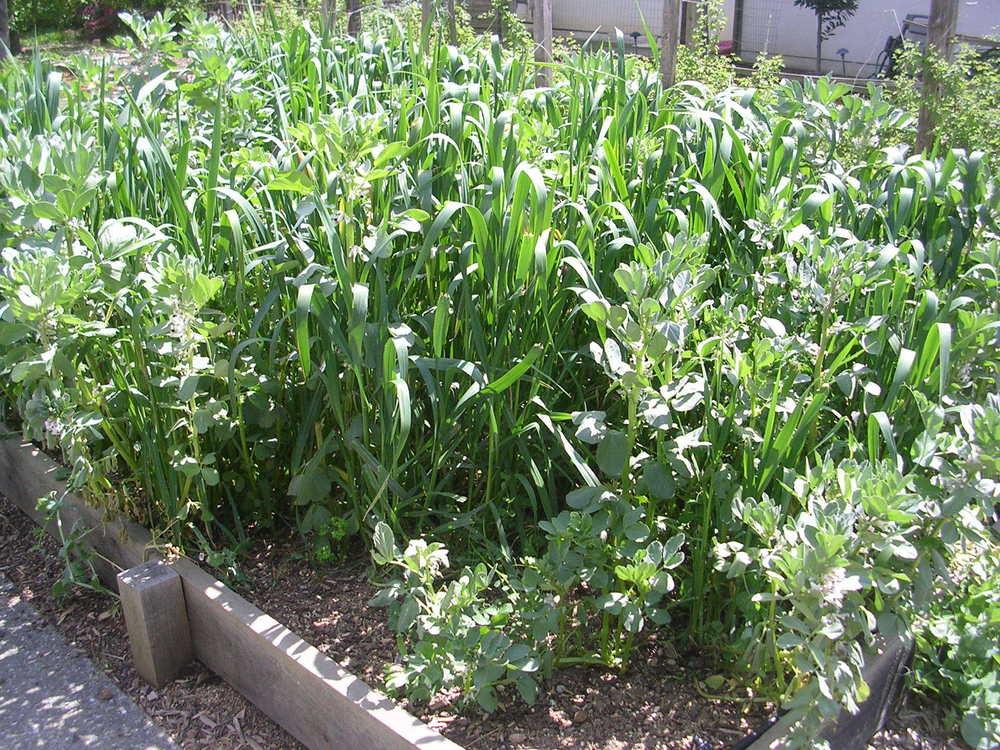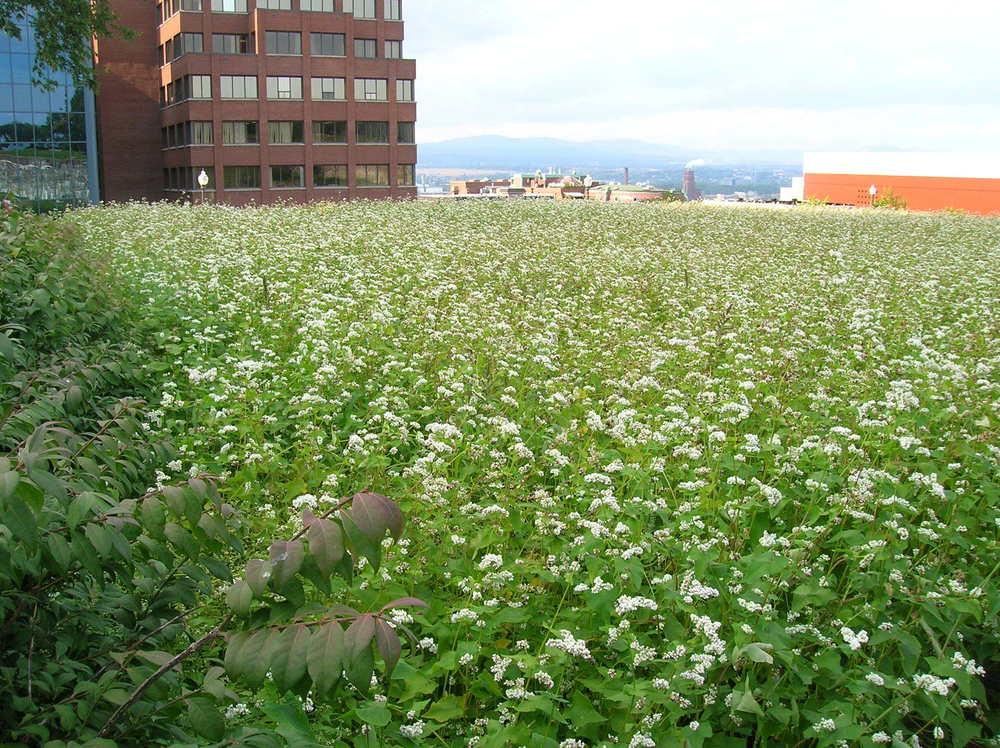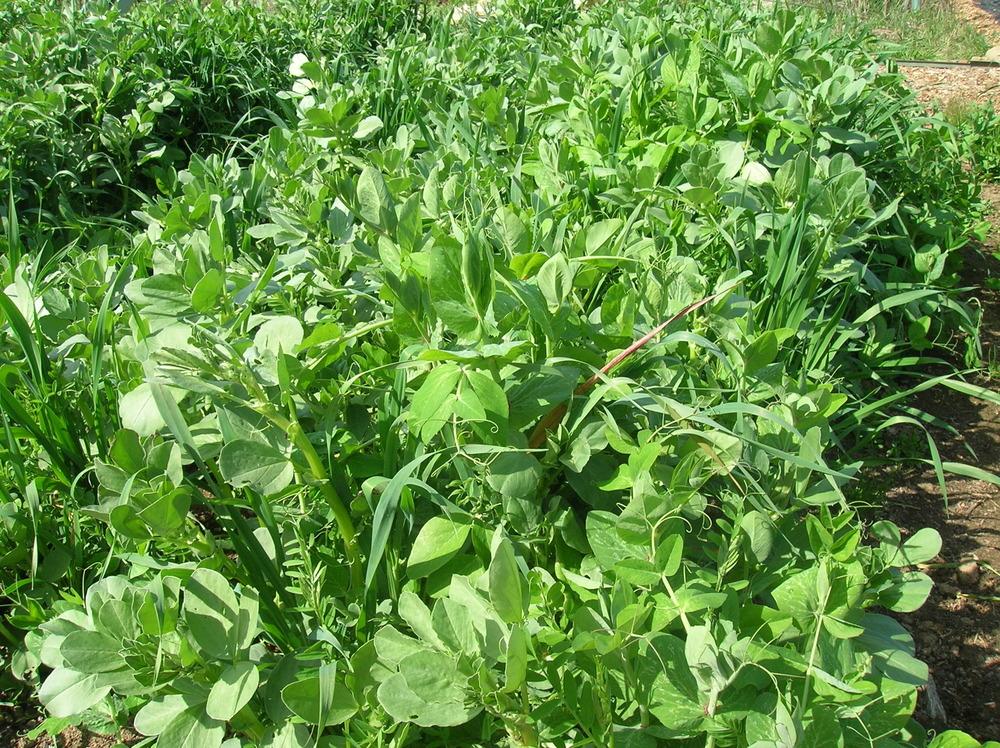 Whenever I think of cover crops and green manures, I think of farms with tractors and acres of land to plant and till. But cover crops can be useful for soil building in a small garden as well and even in a raised bed garden.
Whenever I think of cover crops and green manures, I think of farms with tractors and acres of land to plant and till. But cover crops can be useful for soil building in a small garden as well and even in a raised bed garden.
In my upcoming book, The Complete Guide to No-Dig Gardening, coming out in December 2020, I talk about growing cover crops to build your soil without having to till or turn it under. It's not that hard to do. The keys are selecting the right cover crops for your area, planting at the right time and learning how to incorporate the green or dead plant material without turning under the bed.
Cover Crops 101
First, let's do a short review of what is a cover crop and a green manure. Cover crops are usually grains or legumes grown in fall to over-winter and then tilled into the soil in spring before planting. Winter rye and hairy vetch are examples of cover crops. Green manures are crops grown, and turned under, during the growing season. Buckwheat is a good example of a green manure. Cover crops and green manures add essential organic matter to the soil which helps plant growth, water and air drainage and retention, and feeds the microbes that help feed our plants. Some cover crops even smother weeds or exude chemicals into the soil that inhibit weed growth.
Cover crops have the added benefit of holding the soil in place in winter, stopping erosion from wind and rain. Cover crops and green manures are good ways to add fertility to your soil without relying on compost or organic fertilizers.

Cover Crop Small Beds
While growing and turning under cover crops in a garden setting makes sense, it's a bit more complex in smaller beds. Many gardeners now use raised beds to garden to reduce weeding, watering and other work and to be more productive on a small piece of land. Growing cover crops is still possible, but turning them under can take work. Plus, many gardeners don't have room to devote a whole bed to cover crops. They're too busy planting and harvesting vegetables, herbs and flowers!
But there is a way to use cover crops successfully in small beds and not have to turn the soil in the process. Turning the soil is hard work and disrupts the natural ecosystem of soil life that develops in beds that are left unturned each season. You can just add compost to the dead cover crop and still reap the benefits of adding organic matter through growing cover crops on small, raised beds.
Cover Cropping Raised Beds
In cold winter areas, grow a cover crop that will naturally die in winter. These include spring oats, field peas, mustard and barley. These cover crops are planted in late summer or fall and will eventually die. The roots will still hold the soil in place and the dead greens will remain on the top of the bed all winter. In spring, simply apply a layer of compost over the dead greens, and then plant your plants. In milder winter areas, you can grow cover crops that survive the winter. However, you'll have to be diligent about cutting them back severely and repeatedly in spring before flowering. Eventually, you will kill them. You'll also have to wait a few weeks after killing back the cover crops to plant.

You can grow green manures in a similar way. They can take up a whole bed or a partial bed. If you have the room and are clever about succession planting, you can get a crop of vegetables or herbs from the bed and a green manure crop, too. A simple technique is to plant greens, peas or root crops in spring. Harvest them by mid summer, then sow buckwheat as a green manure. Chop it down right before flowering (when it has the most organic matter) and leave the mulch of dead buckwheat tops on the bed. Add a layer of compost to hold it in place in winter. You can also sow the green manure in spring, cut it down in summer, add a layer of compost and plant a fall crop of kale, parsley and spinach in the bed.

By creating a rotational schedule of planting cover crops in fall or green manures in summer, you can be building the fertility of your raised bed soil every growing season without sacrificing the whole bed. You'll also be building the soil's fertility and life by not turning it under each year.
 Charlie Nardozzi is an award winning, nationally recognized garden writer, speaker, radio, and television personality. He has worked for more than 30 years bringing expert gardening information to home gardeners through radio, television, talks, tours, on-line, and the printed page. Charlie delights in making gardening information simple, easy, fun and accessible to everyone. He's the author of 6 books, has three radio shows in New England and a TV show. He leads Garden Tours around the world and consults with organizations and companies about gardening programs. See more about him at Gardening With Charlie.
Charlie Nardozzi is an award winning, nationally recognized garden writer, speaker, radio, and television personality. He has worked for more than 30 years bringing expert gardening information to home gardeners through radio, television, talks, tours, on-line, and the printed page. Charlie delights in making gardening information simple, easy, fun and accessible to everyone. He's the author of 6 books, has three radio shows in New England and a TV show. He leads Garden Tours around the world and consults with organizations and companies about gardening programs. See more about him at Gardening With Charlie.